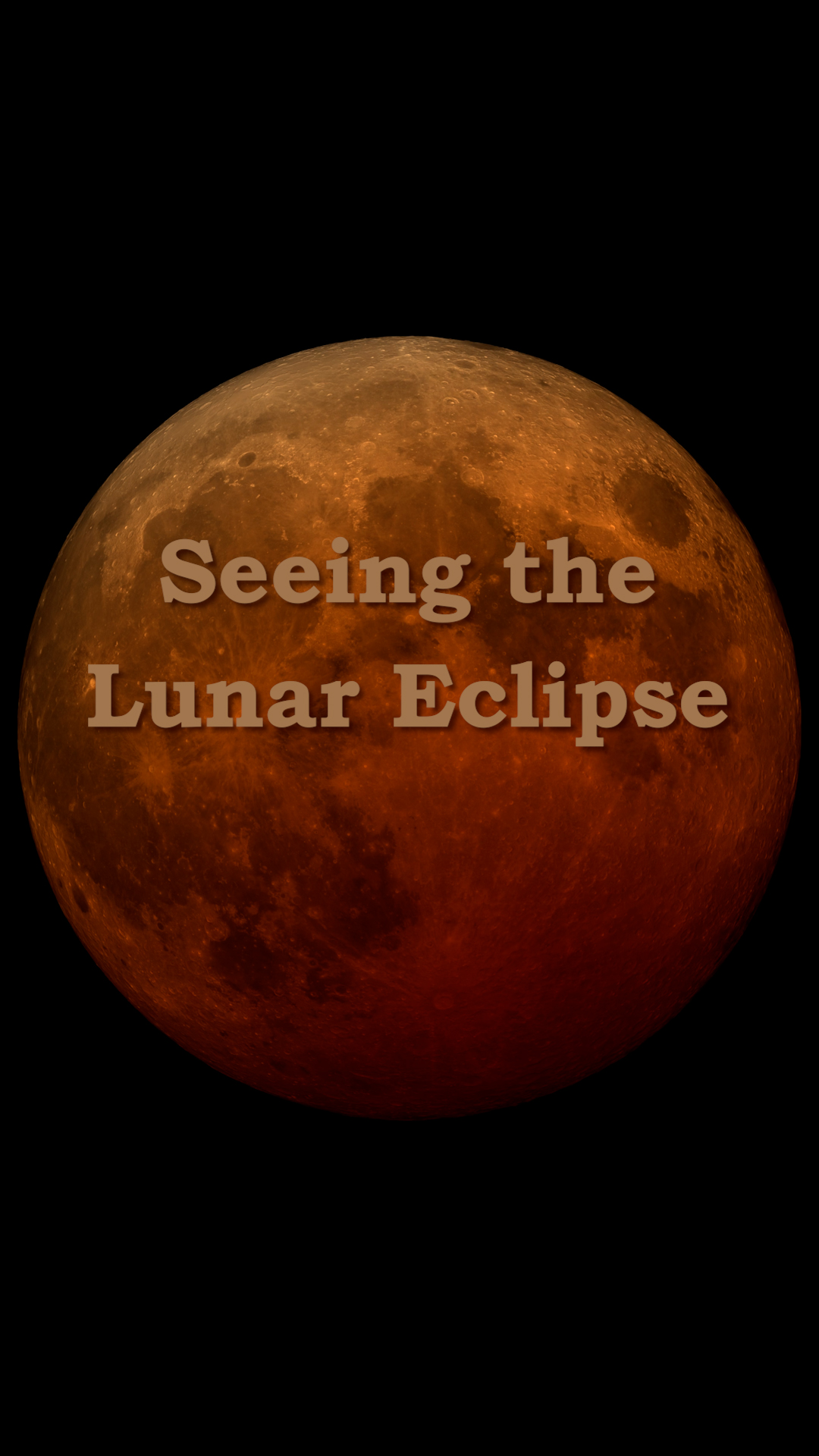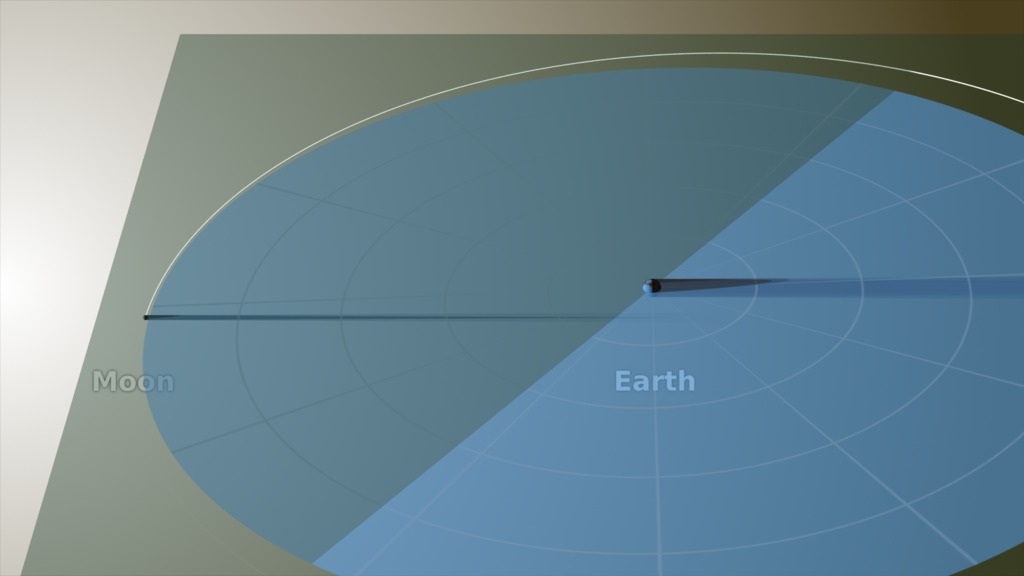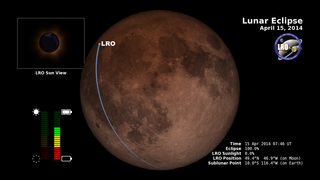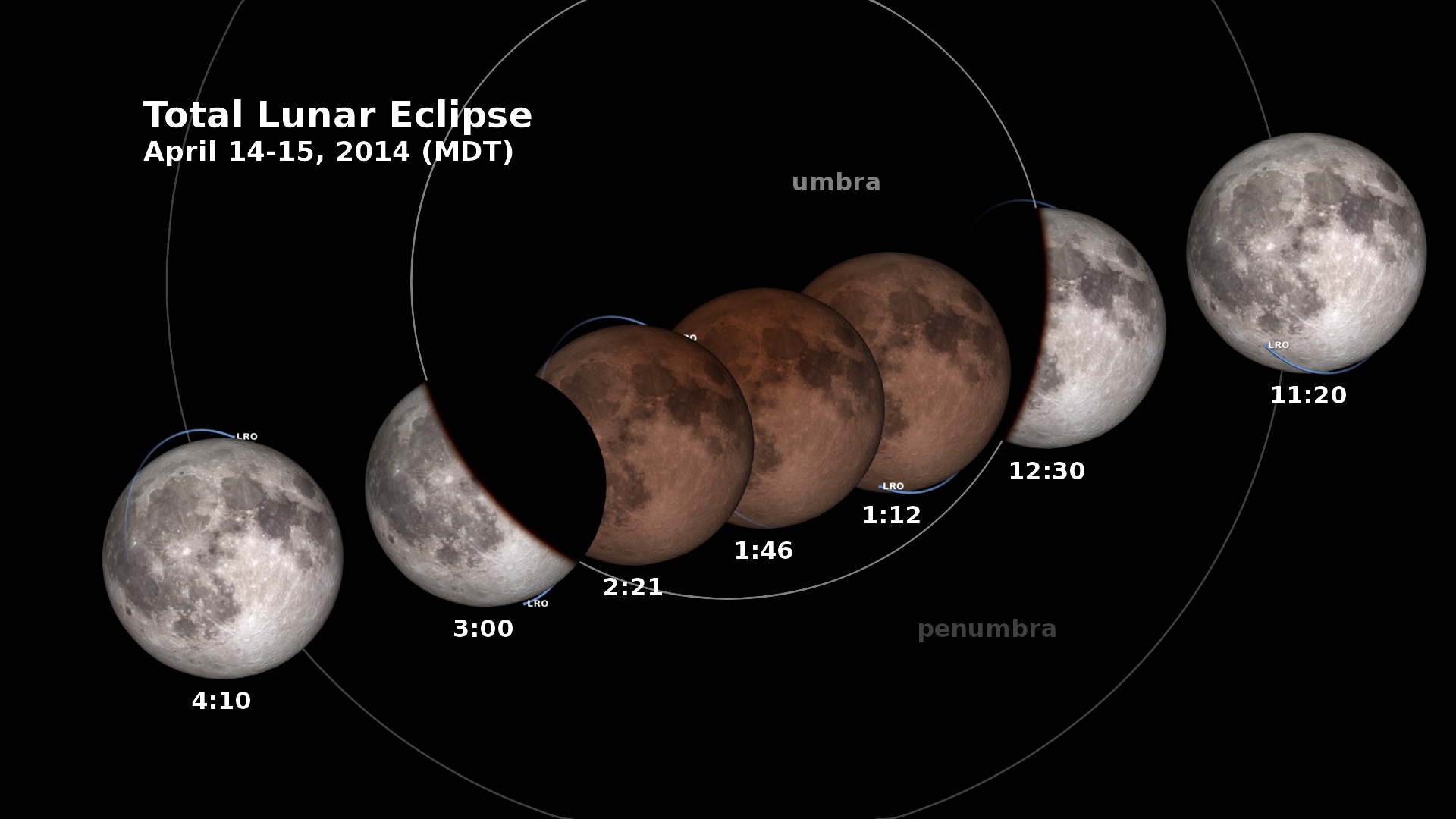Lunar Eclipses and the Moon's Orbit
The animations on this page illustrate the Moon’s orbit and its role in lunar and solar eclipses. A solar eclipse happens when the Moon’s shadow falls on the Earth, while a lunar eclipse happens when the Earth’s shadow falls on the Moon.
Eclipses can only happen at New and Full Moon, when the Earth, Moon, and Sun are all in a straight line. But they don’t happen every New and Full Moon, because the Moon’s orbit is tilted by about 5 degrees. As the Earth and Moon travel around the Sun, the tilt of the Moon’s orbit changes direction relative to the Sun.
This is analogous to the way the tilt of the Earth causes seasons. Just like winter and summer happen every six months, eclipses tend to occur on a roughly six-month cycle.
Unlike most eclipse shadow diagrams, the first three animations here don’t greatly exaggerate the scale of the Earth and Moon. They are only 2x their true scale. The view is exactly perpendicular to the Earth-Sun line. The angle of the Moon’s orbital tilt and the “tapering” of the shadows are both accurate. The orbit happens to be calculated for the months preceding the April 15, 2014 total lunar eclipse.
Initially viewed from overhead, the Moon orbits the Earth until it appears to enter the Earth's shadow. The view then rotates down into the ecliptic plane, showing that the tilt of the Moon's orbit causes it to miss the Earth's shadow. The movie fast-forwards several months, showing the rotation of the Moon's orbital plane with respect to the Sun, until the Moon really does enter the Earth's shadow.
Viewed from overhead (the ecliptic north pole), the shadows of the Moon and Earth first align for a lunar eclipse, then a solar eclipse two weeks later. An inset shows what the Moon looks like during and between these events.
Viewed from an increasingly oblique angle approaching the axis of the Earth's shadow, the Moon enters the shadow, producing a total lunar eclipse.
An illustration of the Moon's orbit and the resulting phases. The scale of the Moon and Earth are greatly exaggerated.
This cartoon shows the Moon turning red as it passes through the Earth's shadow. The frames include an alpha channel. They are designed to be combined with a backdrop that shows the geometry of the umbra and penumbra.
For More Information
Credits
Please give credit for this item to:
NASA's Scientific Visualization Studio
-
Animator
- Ernie Wright (USRA)
-
Producers
- Dan Gallagher (USRA)
- David Ladd (USRA)
- Michelle Handleman (USRA)
-
Scientists
- John Keller (NASA/GSFC)
- Noah Petro (NASA/GSFC)
- Michelle Thaller (NASA/GSFC)
-
Project support
- Laurence Schuler (ADNET Systems, Inc.)
- Ian Jones (ADNET Systems, Inc.)
Release date
This page was originally published on Thursday, April 10, 2014.
This page was last updated on Wednesday, May 3, 2023 at 1:51 PM EDT.
Missions
This page is related to the following missions:Series
This page can be found in the following series:Datasets used
-
DEM (Digital Elevation Map) [LRO: LOLA]
ID: 653 -
DE421 (JPL DE421)
ID: 752Planetary ephemerides
This dataset can be found at: http://ssd.jpl.nasa.gov/?ephemerides#planets
See all pages that use this dataset -
WAC 643nm High Sun Global Mosaic [LRO: LROC]
ID: 803
Note: While we identify the data sets used on this page, we do not store any further details, nor the data sets themselves on our site.







